Close Up — but not that Personal: Catherine Deneuve, Belle de Jour, and the Lost Art of Cinematic Detachment.
I met Catherine Deneuve once. Except that I didn’t. At a first edition book signing of her long-awaited memoirs, Close Up and Personal (2005), at Hatchards in Piccadilly. A scary experience. Ms. Deneuve sat on a burnished throne. I joined the queue of fawning admirers, and one by one, a gibbering acolyte ushered us into the Goddess’s presence. Deneuve was tiny and coiffed — a gold-buttoned, bouclé suit (Chanel?) — like a French banker’s wife. Close up, we certainly were, but ‘personal’ — I’m not so convinced. My mother’s book (an early birthday present) was met with a raise of an amused, manicured eyebrow — my mother has an unusual Christian name — and Marigold, Je t’aime toi! scrawled in black felt-tip across the title page, whilst my copy was dismissed with a curt, bog-standard inscription. On to the next. I wish it had been the other way round. A playful bauble for the Drawing Room coffee table, a strategic placement — alongside Dirk’s personally inscribed novella, Voices in the Garden (1981), both ripe for surreptitious discovery by a nosey dinner party guest. How’s that for one-upmanship?
Of course, Catherine Deneuve is perfectly cast — as a cool, poised and polished Hitchcockian ice-maiden — in Luis Buñuel’s Belle de Jour (1967), a film I’ve been meaning to write about for a very long time, described on various websites as a ‘surrealist erotic psychological drama’. Unlike the Brits, the French take sex seriously. For them, it’s a subject open to earnest philosophical discussion, intellectual analysis and practical interpretation. In Britain, sex is relegated to saucy innuendo, a confessional nod and a wink, “Something for the weekend, Sir?”, a Seaside Special, cheeky Robin Askwith and a milk float, The Fall and Rise of Reginald Perrin — or it doesn’t happen at all. The sinister shadow of Mary Whitehouse. Which may explain the falling birth rate. No Sex, please, we’re British. I turned to that Trusty Sword of Truth, ChatGPT, and discovered a titillating statistic. According to a recent IFOP survey of Parisians and their sexual habits, 58% claim to have cheated on their partners, 29% relish a threesome, and 22% — that’s one in five — have participated in group orgies. On the other hand, according to the survey, a significant majority of us repressed, perfidious Britons expressed a penchant for Le Vice Anglais. That’s 60% of British couples investigating the discreet charm of bondage, kinky boots and lemonade. Steed and Mrs Peel gone wrong. And all that comes with it.
Which leads us neatly into the plot of Belle de Jour, based on Joseph Kessel’s scandalous novel of 1928, in which, I quote, ‘an affluent young woman leads a double life as a prostitute.’ Séverine (Catherine Deneuve) is an early-twenty-something blonde — Bon Chic, Bon Genre — married to Pierre (Jean Sorel), a wholesome, handsome twenty-something surgeon, going places. And they have a smart flat just off the Avenue de Messine, in the 8th, quite close to the Champs-Élysées. And with the flat comes a jumble of trendy abstracts, chiming carriage clocks, and haute bourgeois antiques (in black and gilt) of the Second Empire. Very Sixties. And a black Fiat 1500 cabriolet. And a maid. You get the picture. Everything’s perfect. Especially the Yves Saint Laurent suits and the Roger Vivier shoes. Except that it ain’t. The couple share a non-existent sex life. Now I realise that twin beds were, actually, the norm for well-brought-up married couples in the 1960s, but in this particular case, the set-up ain’t especially helpful. Poor Séverine’s the problem. Although she loves her husband, there’s a decided lack of action, apart, that is, from a series of kinky, surrealist daydreams featuring cats, cowpats and creepy, top-hatted old men brandishing riding crops. And then — at a ski lodge in Valberg, or is it at the tennis courts? — balding, lecherous, middle-aged Henri (Michel Piccoli) mentions, in passing to Séverine, the exact address of an upmarket brothel. Useful, that. 11, cité Jean de Saumur for the record. So Séverine duly investigates and then, inevitably, with little hesitation, signs up — but with the strict condition that she can only work until five in the afternoon. Two to Five.
Various film reviews describe Séverine as a ‘bored housewife’, and having seen the film several times, I don’t think that’s right. She’s not bored, as such. It’s more complicated than that. Séverine’s kinda lobotomised. Spaced out. On Planet Nine. Possibly the victim of some form of abuse — there’s a brief childhood flashback tempered with Catholic guilt, and, consequently, she has masochist tendencies. And fulfilling her fantasies improves her marital sex life. But before we get too serious, Belle de Jour is also a subversive, witty, dry — and often amusing — take on fashionable psychological theories about sex in the Late 1960s. Marvellously detached. And, unusually for that era, female erotic fantasies drive the narrative. Buñuel and screenwriter, Jean-Claude Carrière, carried out exhaustive research beforehand, speaking to psychiatrists and psychoanalysts and listening (with studious attention, no doubt) to the first-hand testimonies of ‘real women’. In Simone de Beauvoir’s The Second Sex (1949), de Beauvoir explored the limits of female freedom in a patriarchal society. And in Germaine Greer’s international bestseller, The Female Eunuch (1970), Greer argued that suburban, consumerist, bourgeois values repressed women sexually. But is this really true? Could be. From a male perspective — and trust me on this, as following the last time I examined the area between my legs, I can indeed confirm that I am of the male persuasion — shopping at Zara (with a woman) is an experience worthy of an Hieronymus Bosch triptych — hell on earth. The girls slip into a sort of weird, hyper-efficient, glazed-eyed trance as they sift through the stacks of clothes on the rack, elbowing their fellow competitors out of the way with a ferocious, frenzied, territorial possession. In the meantime, the shop is littered with lost, long suffering Neanderthals, gormless husbands and boyfriends with nowhere to sit — twiddling their thumbs, glancing nervously at their aviator watches and staring into space. No time for Le Vice Anglais.
On release, Belle de Jour (1967) received universal acclaim and won numerous European cinematic awards. Roger Ebert gave the film four out of four stars, and included it in his Great Movies list, with Empire magazine listing Belle de Jour as one of the 100 best films of World Cinema. It is, undoubtedly, a masterpiece of French cinema. I watched it on a special 40th Anniversary DVD edition (pictured above), which comes with my recommendation. It’s also available on Blu-ray and on Amazon Prime Video.
Right. Where are we? That was Film No. 156 in the official WEEKEND FLICKS. Cinema for Grown Ups Archive. And by now you should know how it works. Friday’s post is for the Paid Subscribers (£5 a month or £50 a year). An elite coterie of discriminating cinephiles. Paid subscribers also get access to the entire archive, which goes all the way back to when we started, in December 2023. Sunday’s post is free, and open to all. Two film recommendations to get your teeth into over the weekend. Time to sit back, relax, mix a cocktail — and watch an old film. And the cocktail for Belle de Jour? It has to be a French 75. Gin, champers, lemonade and sugar. I’ll be back on Friday. Until then. À bientôt!

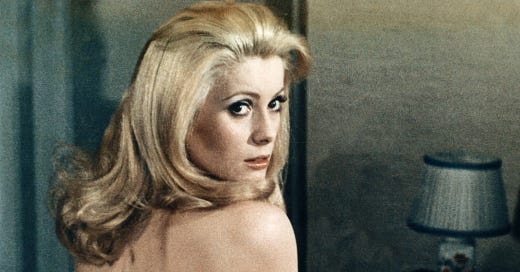



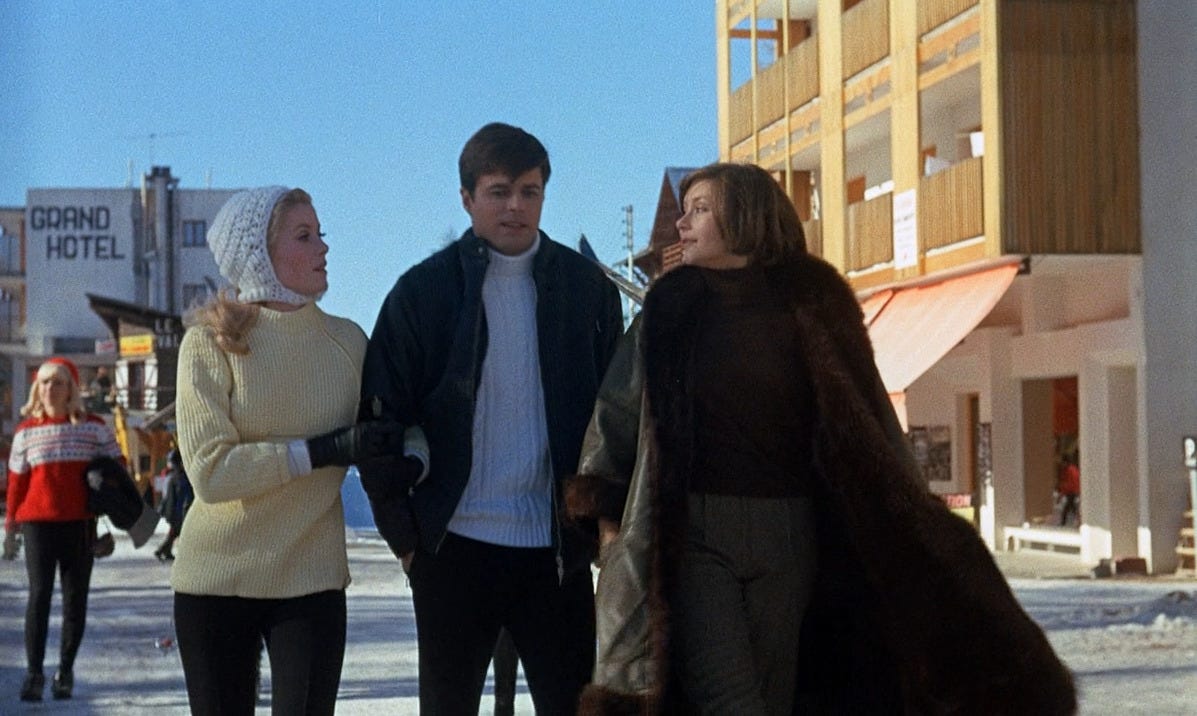
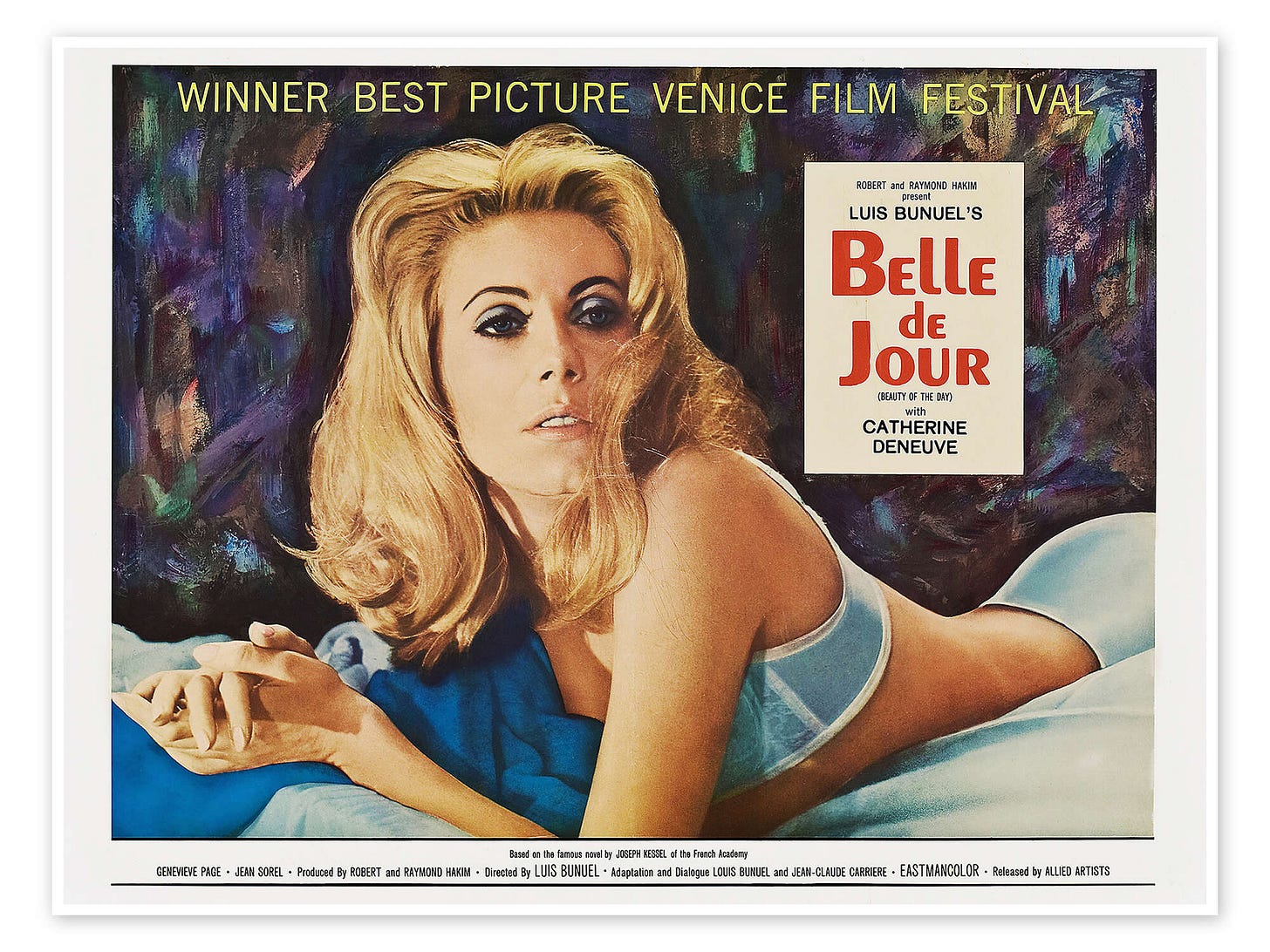

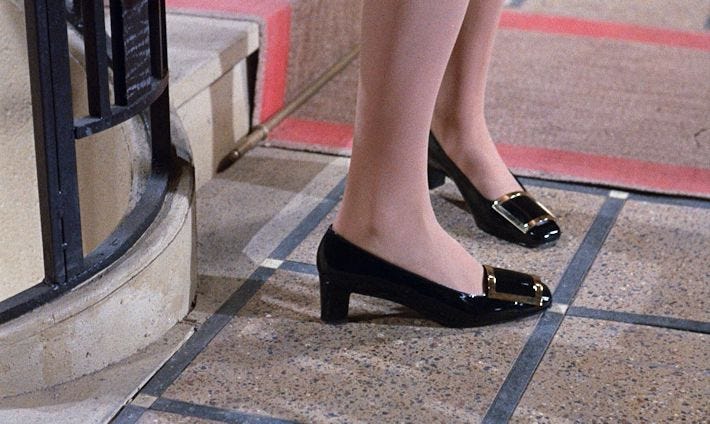
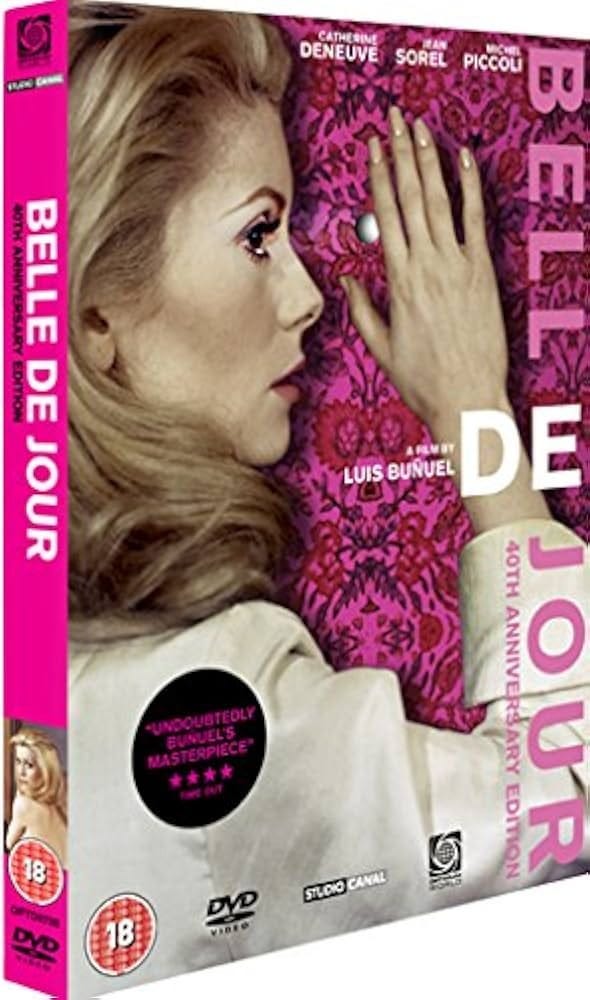
Must give it another go. Only seen once, and was perhaps a little tired and emotional after a night’s carousing, so not the best time to give it my best and fullest attention…should have put on Aliens, the default post-carousing film…
But I do remember finding it intriguing, and wondering what the heck was wrong with this lady…ha-ha! Will watch again…Ta!
And as for Zara, or any shopping expeditions with my wife and daughter, Dante’s going to need more circles…and I’m gonna need a bigger boat!
All right, I'll have to try again. The last time I gave the film a viewing, I found it yawningly boring. Maybe I've seen too many "bourgeoises" in Chanel and sensible shoes growing up ... often the mothers of my college buddies. They might have benefited from a little 2 to 5, lol.